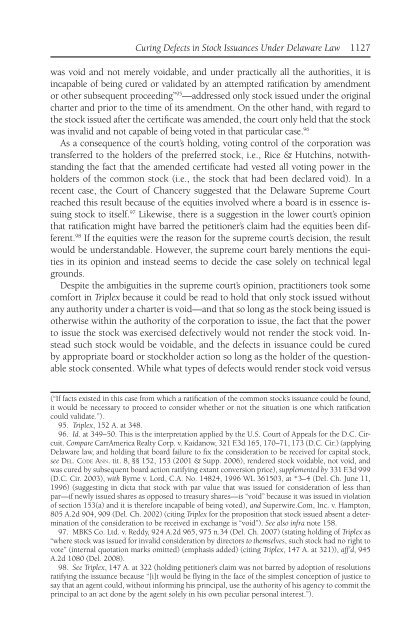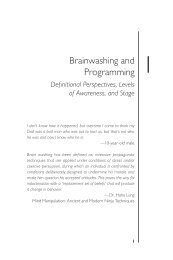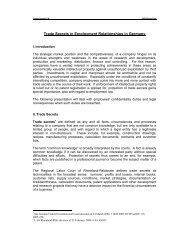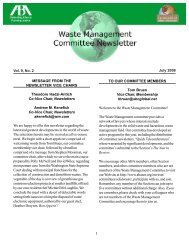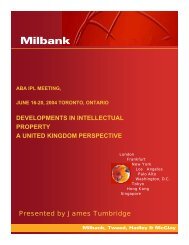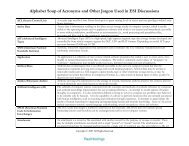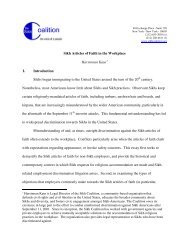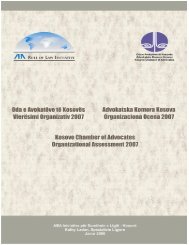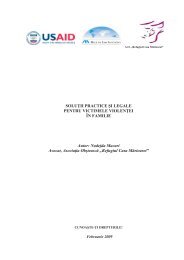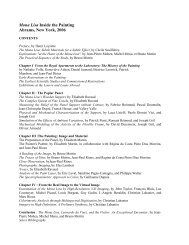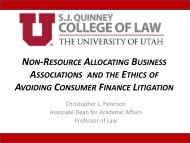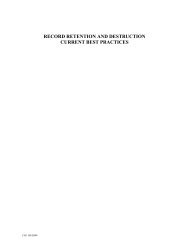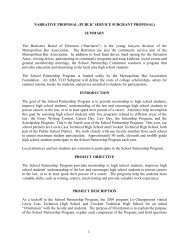Curing Defects in Stock Issuances - American Bar Association
Curing Defects in Stock Issuances - American Bar Association
Curing Defects in Stock Issuances - American Bar Association
Create successful ePaper yourself
Turn your PDF publications into a flip-book with our unique Google optimized e-Paper software.
<strong>Cur<strong>in</strong>g</strong> <strong>Defects</strong> <strong>in</strong> <strong>Stock</strong> <strong>Issuances</strong> Under Delaware Law 1127<br />
was void and not merely voidable, and under practically all the authorities, it is<br />
<strong>in</strong>capable of be<strong>in</strong>g cured or validated by an attempted ratifi cation by amendment<br />
or other subsequent proceed<strong>in</strong>g” 95 —addressed only stock issued under the orig<strong>in</strong>al<br />
charter and prior to the time of its amendment. On the other hand, with regard to<br />
the stock issued after the certifi cate was amended, the court only held that the stock<br />
was <strong>in</strong>valid and not capable of be<strong>in</strong>g voted <strong>in</strong> that particular case. 96<br />
As a consequence of the court’s hold<strong>in</strong>g, vot<strong>in</strong>g control of the corporation was<br />
transferred to the holders of the preferred stock, i.e., Rice & Hutch<strong>in</strong>s, notwithstand<strong>in</strong>g<br />
the fact that the amended certifi cate had vested all vot<strong>in</strong>g power <strong>in</strong> the<br />
holders of the common stock (i.e., the stock that had been declared void). In a<br />
recent case, the Court of Chancery suggested that the Delaware Supreme Court<br />
reached this result because of the equities <strong>in</strong>volved where a board is <strong>in</strong> essence issu<strong>in</strong>g<br />
stock to itself. 97 Likewise, there is a suggestion <strong>in</strong> the lower court’s op<strong>in</strong>ion<br />
that ratifi cation might have barred the petitioner’s claim had the equities been different.<br />
98 If the equities were the reason for the supreme court’s decision, the result<br />
would be understandable. However, the supreme court barely mentions the equities<br />
<strong>in</strong> its op<strong>in</strong>ion and <strong>in</strong>stead seems to decide the case solely on technical legal<br />
grounds.<br />
Despite the ambiguities <strong>in</strong> the supreme court’s op<strong>in</strong>ion, practitioners took some<br />
comfort <strong>in</strong> Triplex because it could be read to hold that only stock issued without<br />
any authority under a charter is void—and that so long as the stock be<strong>in</strong>g issued is<br />
otherwise with<strong>in</strong> the authority of the corporation to issue, the fact that the power<br />
to issue the stock was exercised defectively would not render the stock void. Instead<br />
such stock would be voidable, and the defects <strong>in</strong> issuance could be cured<br />
by appropriate board or stockholder action so long as the holder of the questionable<br />
stock consented. While what types of defects would render stock void versus<br />
(“If facts existed <strong>in</strong> this case from which a ratifi cation of the common stock’s issuance could be found,<br />
it would be necessary to proceed to consider whether or not the situation is one which ratifi cation<br />
could validate.”).<br />
95. Triplex, 152 A. at 348.<br />
96. Id. at 349–50. This is the <strong>in</strong>terpretation applied by the U.S. Court of Appeals for the D.C. Circuit.<br />
Compare CarrAmerica Realty Corp. v. Kaidanow, 321 F.3d 165, 170–71, 173 (D.C. Cir.) (apply<strong>in</strong>g<br />
Delaware law, and hold<strong>in</strong>g that board failure to fi x the consideration to be received for capital stock,<br />
see DEL. CODE ANN. tit. 8, §§ 152, 153 (2001 & Supp. 2006), rendered stock voidable, not void, and<br />
was cured by subsequent board action ratify<strong>in</strong>g extant conversion price), supplemented by 331 F.3d 999<br />
(D.C. Cir. 2003), with Byrne v. Lord, C.A. No. 14824, 1996 WL 361503, at *3– 4 (Del. Ch. June 11,<br />
1996) (suggest<strong>in</strong>g <strong>in</strong> dicta that stock with par value that was issued for consideration of less than<br />
par—if newly issued shares as opposed to treasury shares—is “void” because it was issued <strong>in</strong> violation<br />
of section 153(a) and it is therefore <strong>in</strong>capable of be<strong>in</strong>g voted), and Superwire.Com, Inc. v. Hampton,<br />
805 A.2d 904, 909 (Del. Ch. 2002) (cit<strong>in</strong>g Triplex for the proposition that stock issued absent a determ<strong>in</strong>ation<br />
of the consideration to be received <strong>in</strong> exchange is “void”). See also <strong>in</strong>fra note 158.<br />
97. MBKS Co. Ltd. v. Reddy, 924 A.2d 965, 975 n.34 (Del. Ch. 2007) (stat<strong>in</strong>g hold<strong>in</strong>g of Triplex as<br />
“where stock was issued for <strong>in</strong>valid consideration by directors to themselves, such stock had no right to<br />
vote” (<strong>in</strong>ternal quotation marks omitted) (emphasis added) (cit<strong>in</strong>g Triplex, 147 A. at 321)), aff’d, 945<br />
A.2d 1080 (Del. 2008).<br />
98. See Triplex, 147 A. at 322 (hold<strong>in</strong>g petitioner’s claim was not barred by adoption of resolutions<br />
ratify<strong>in</strong>g the issuance because “[i]t would be fl y<strong>in</strong>g <strong>in</strong> the face of the simplest conception of justice to<br />
say that an agent could, without <strong>in</strong>form<strong>in</strong>g his pr<strong>in</strong>cipal, use the authority of his agency to commit the<br />
pr<strong>in</strong>cipal to an act done by the agent solely <strong>in</strong> his own peculiar personal <strong>in</strong>terest.”).


